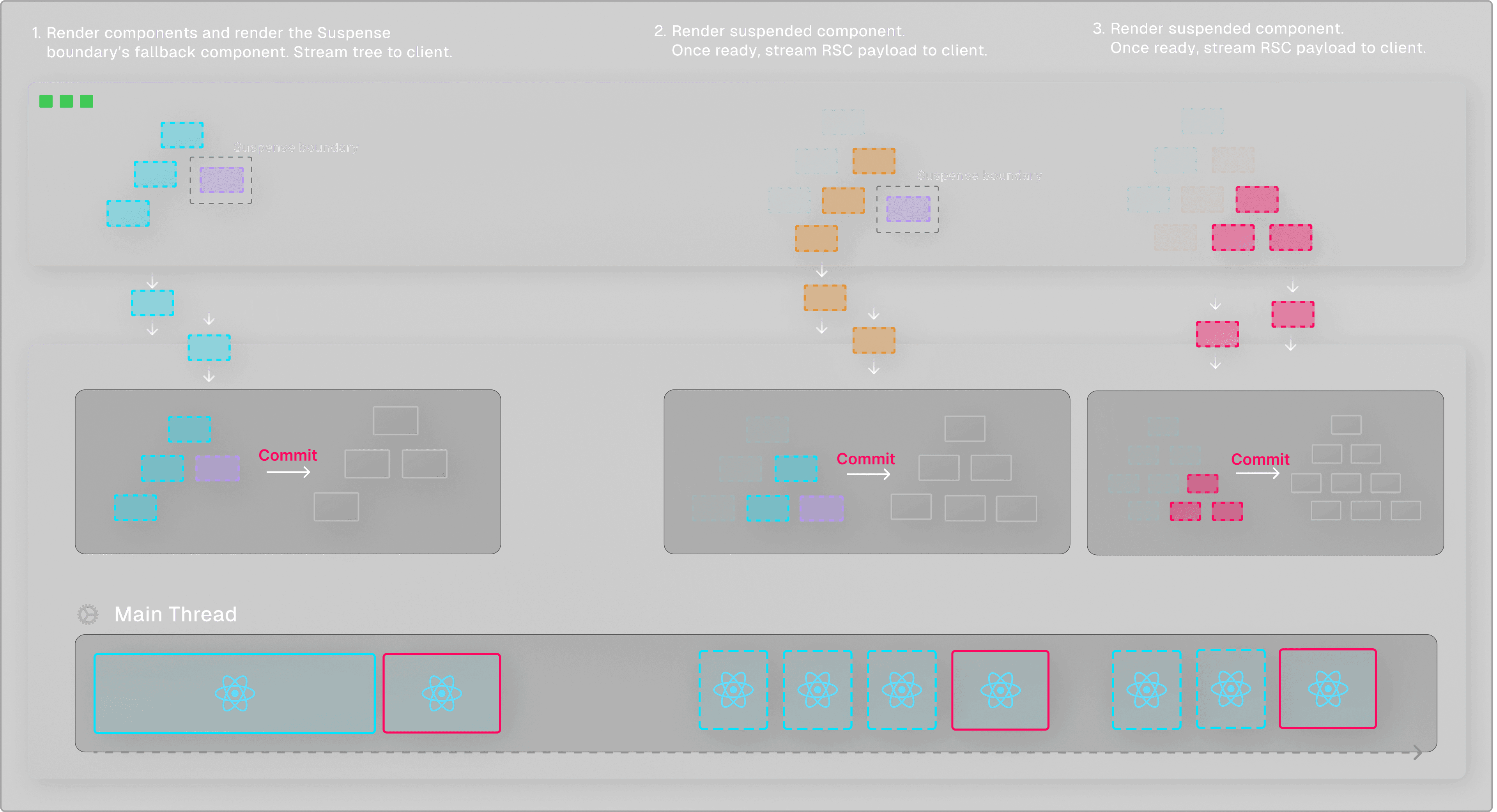TILs tagged under #react
- Any task that takes more than 50 milliseconds to run is considered a long task.
- Device must create a new frame every 16 ms (~60fps)
- Additional time for other tasks while maintaining smooth visual experience.
-
Aim: Minimize long tasks (duh!)
- Total Blocking Time = TTI - FCP
- The Interaction to Next Paint (INP), a new Core Web Vitals metric, measures the time from a user’s first interaction with the page (e.g. clicking a button) to when this interaction is visible on-screen; the next paint.
- INP is important for site like e-commerce with a lot of user interactions.
- A visual update in React is divided into two phases: the render phase and the commit phase.
- During the render phase, React calculates the differences between the current DOM and the new React component tree and prepares the necessary updates.
- In the commit phase, React applies the updates.
- A synchronous render is an “all-or-nothing” operation, where it’s guaranteed that a component that starts rendering will always finish.
-

- React 18 introduces a new concurrent renderer that operates behind the scenes. This renderer exposes some ways for us to mark certain renders as non-urgent
-

- React will yield back to the main thread every 5 milliseconds to see if there are more important tasks to handle.
- By continuously yielding back to the main thread, React is able to make such renders non-blocking and prioritize more important tasks.
- We can mark an update as non-urgent by using the
startTransitionfunction made available by theuseTransitionhook. - Transitions enable React to render multiple versions of the UI concurrently, and manage priorities between different tasks.
- It’s up to the developer to optimize bundle size when working with Client Components and RSC. Developers can do this by:
- Ensuring that only the leaf-most node of the interactive component defines the “use client” directive. This may require some component decoupling.
- Passing component trees as props rather than importing them directly. This allows React to render the children as React Server Components without adding them to the client bundle.
- Using
Suspensein combination with React Server Components allows us to directly access server-side data sources without requiring a separate API endpoint, such as databases or the file system. - When a component is suspended, for example because it’s still waiting for data to load, React doesn’t just sit idle until the component has received the data.
- Instead, it pauses the rendering of the suspended component and shifts its focus to other tasks.
- The combination of
Suspensewith React Server Component’s streamable format allows high-priority updates to be sent to the client as soon as they’re ready, without waiting for lower-priority rendering tasks to complete.
import { useTransition } from "react";
function Button() {
const [isPending, startTransition] = useTransition();
return (
<button
onClick={() => {
urgentUpdate();
startTransition(() => {
nonUrgentUpdate()
})
}}
>...</button>
)
}
Source: https://vercel.com/blog/how-react-18-improves-application-performance
Link to TIL